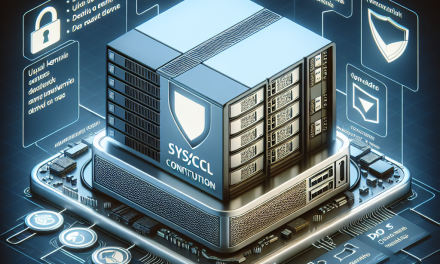In an era where cybersecurity is more critical than ever, the integrity of server systems is paramount. One of the most effective measures to protect against various threats is implementing Secure Boot. This article will explore the fundamentals of Secure Boot, how it works, its significance in Linux environments, and a step-by-step guide to implementing Secure Boot on your Linux servers.
What is Secure Boot?
Secure Boot is a security standard that ensures that only trusted software is loaded during the boot process. It is a feature found in UEFI (Unified Extensible Firmware Interface), which replaces the traditional BIOS. Secure Boot verifies the digital signatures of the bootloader, operating system kernel, and other essential components before allowing them to execute. If the signatures are not recognized or trusted, the system will not boot, thus protecting against malware and unauthorized code execution.
Why is Secure Boot Important?
-
Preventing Rootkits and Bootkits: These types of malicious software can compromise a system at a low level, making them extremely difficult to detect and remove. Secure Boot helps to ensure that only legitimate software is executed.
-
Maintaining System Integrity: By enforcing a trusted boot process, Secure Boot maintains the integrity of your Linux server environment, ensuring that no unauthorized code runs at startup.
-
Compliance with Security Standards: Secure Boot is often a requirement for compliance with various security frameworks and regulations, such as FIPS, PCI-DSS, and others.
- Protecting Confidential Data: Servers often handle sensitive information. Secure Boot provides an additional layer of protection to safeguard this data from tampering and unauthorized access.
Prerequisites for Implementing Secure Boot
Before you can implement Secure Boot, there are several prerequisites to consider:
-
UEFI Firmware: Ensure your server’s firmware supports UEFI and Secure Boot. Most modern hardware does.
-
Compatible Linux Distribution: While major distributions such as Ubuntu, Fedora, and CentOS support Secure Boot, ensure you are using a compatible version.
-
Signed UEFI Bootloaders and Kernels: The bootloaders and kernels must be signed with recognized keys. Most supported distributions include signed versions by default.
- Access to UEFI Firmware Settings: You need administrative access to the UEFI firmware settings.
Step-by-Step Guide to Implementing Secure Boot on Linux Servers
Step 1: Verify UEFI and Secure Boot Support
- Reboot your server and enter the UEFI settings (usually by pressing F2, DEL, or ESC during the boot process).
- Look for a menu item related to "Boot" or "Security." Ensure that UEFI is enabled and locate the Secure Boot option.
Step 2: Enable Secure Boot
- In the UEFI settings, find the Secure Boot option and set it to “Enabled.”
- Save the changes and exit the UEFI settings.
Step 3: Install a Supported Linux Distribution
- If you don’t already have a Linux distribution installed, download a version that supports Secure Boot (e.g., Ubuntu 20.04+, Fedora 33+, CentOS 7+).
- Use a bootable USB drive to install the OS on your server, ensuring it is formatted with GPT (GUID Partition Table) to be UEFI-compatible.
Step 4: Check the Secure Boot Status in Linux
Once your server is up and running, you can verify Secure Boot status:
mokutil --sb-state- This command will provide information on whether Secure Boot is enabled or disabled.
Step 5: Managing Secure Boot Keys (Optional)
Some organizations may require custom keys to manage their own signed kernel modules or drivers. For this, you can use the Machine Owner Key (MOK) management tool:
- Run
mokutil --import MOK.der. This command imports a new key from a DER-encoded file (MOK.der). - Follow the prompts to set a password.
- Reboot your server. During boot, you will have an option to enroll the new key using the password you set.
Step 6: Test Your Setup
To ensure everything is configured correctly:
- Create a simple unsigned kernel module (this will help confirm that Secure Boot is working correctly).
- Attempt to load the module:
sudo insmod my_unsigned_module.ko- It should fail with an error indicating that Secure Boot is blocking the module due to its lack of a signature.
Conclusion
Implementing Secure Boot on Linux servers is a crucial step towards enhancing your server’s security posture. By ensuring only trusted software executes at boot, you can effectively mitigate the risk of various types of malware and unauthorized modifications. As cyber threats continue to evolve, adopting such robust security measures is critical for maintaining the integrity and reliability of your systems.
Invest the time to configure Secure Boot, and you will not only ensure compliance with industry standards but also significantly bolster your defense against the continually evolving landscape of cyber threats. For more articles and expert tips, stay tuned to the WafaTech Blog!





